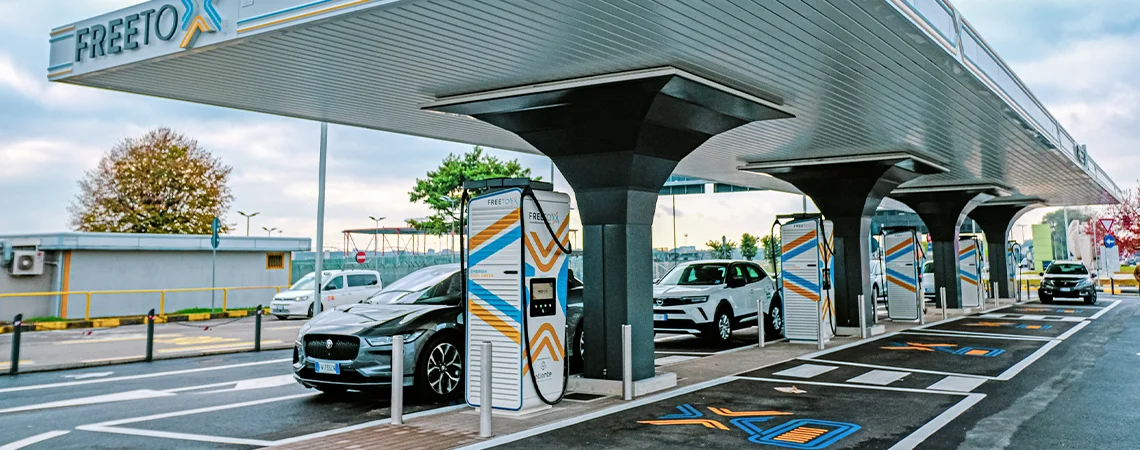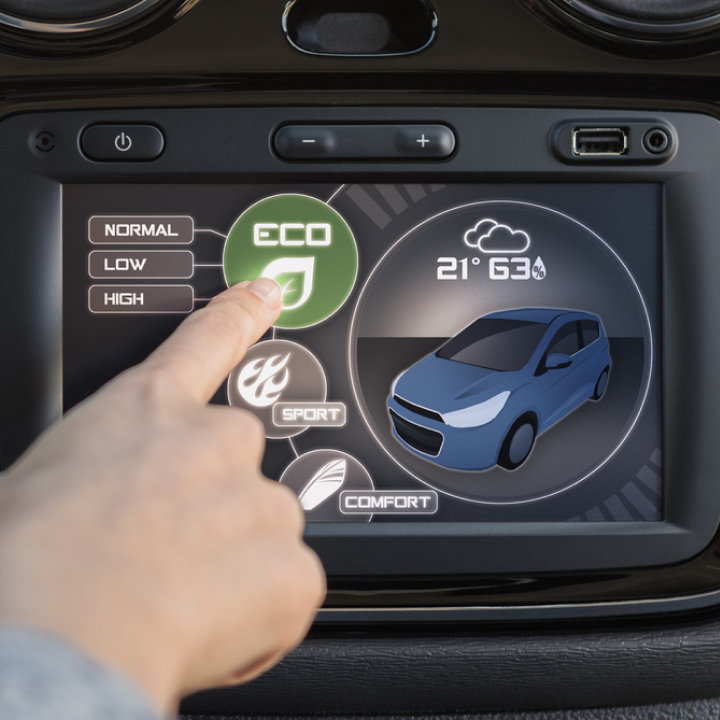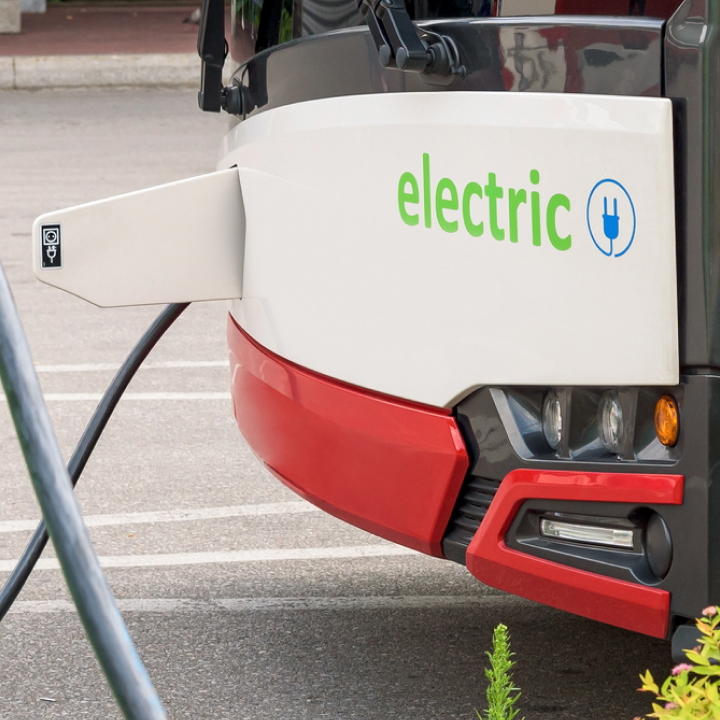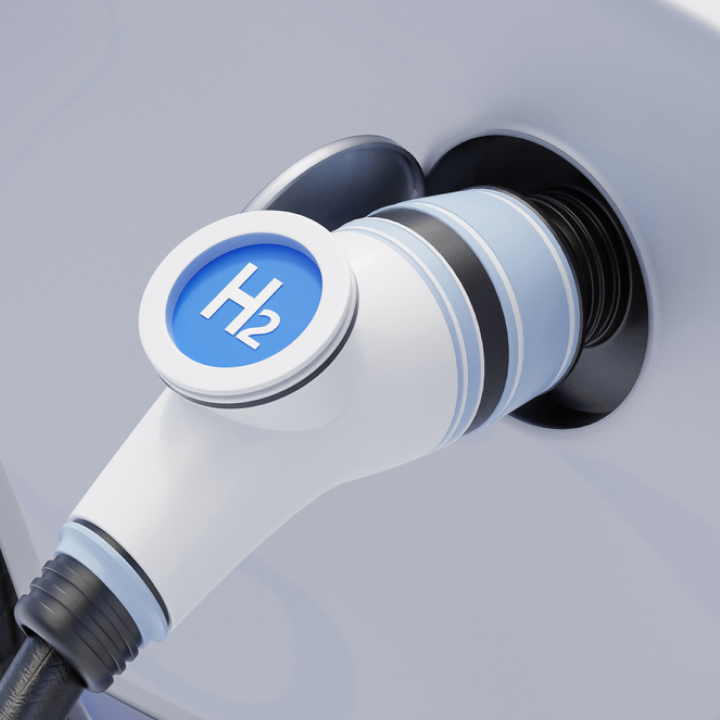Recharging is as easy as refueling.
What you need. A charging station with a charging station that has a connector compatible with your car’s charging outlet.
What do charging stations look like and what types of connectors are there?
In this article we will look at everything you need to manage charging an electric car worry-free, just as it has always been until now for cars with endothermic engines.
How electric charging stations work
Charging stations are designed to recharge electric vehicles safely and efficiently. What distinguishes them are mainly two elements: the power and the available connectors.
Power is the “engine” of charging. It is expressed in kilowatts (kW) and represents the amount of power delivered from the charging station to the vehicle. The power of a station affects the speed at which the vehicle recharges.
The connector, on the other hand, is the “key” that connects the charging stationto the vehicle. Stations can be equipped with different types of connectors, but the most common ones are CCS2, CHAdeMO and Type2. Each of these has specific features to suit different vehicle models.
Let’s learn about the different types of charging stations
HPC (High Power Charging) – High Power charging stations.
High power charging stations, often referred to as HPCs, represent the cutting edge of fast charging. They are ideal for those who want to recharge their vehicles in a short time, particularly during long trips, allowing for shorter stops.
Free To X’s HPC stations have an output of 400kW and can recharge your electric car in 15 to 20 minutes.
Fast Multi-Standard charging stations
Fast Multi-Standard stations are more versatile and support different types of connectors. This flexibility makes them suitable for a wide range of electric vehicles. They are more widely used, although they offer a lower charging speed than HPCs.
Free To X’s Fast Multi-Standard stations have a power rating of 64kW and different connector types, to really allow everyone to charge their car.
The charging connector types
There are different types of charging connectors. Free To X charging stations have both the most common connectors on electric cars and those defined as European standards. Let’s look at them together:
CCS2
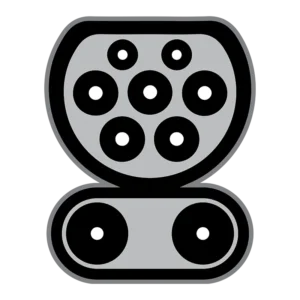
The CCS2 connector is the European standard for DC charging, which in Free To X’s HPC stations supports up to 400 kW of power. It offers faster charging times, but to use it you will first have to make sure your electric car is compatible with this system.
CHAdeMO

The CHAdeMO connector was invented in Japan more than 10 years ago, when international standards did not yet exist, which is why it can still be found more frequently in electric cars from Japanese brands.
At Free To X charging stations, charging with the CHAdeMO connector has a maximum output of 64kW.
Type2
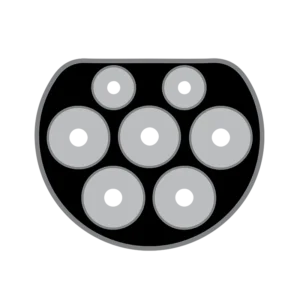
The Type2 connector is the European standard for AC charging. Although it has a lower power rating than high-power connectors, it is compatible with all vehicles. A system that gives everyone the confidence to charge throughout Europe with peace of mind.
At Free To X charging stations, the Type2 connector can deliver a maximum power of 64kW.
How to recharge your electric car at Free To X charging stations.
Now that you know the charging stations and connectors available at Free To X charging stations, all you need to do is recharge. Here’s how to do it:
- Consult the map of our charging network.
- Select on the map the station where you want to recharge and check which stations and connectors are available
- Once at the charging station, approach the RFID card or use your Mobility Service Provider’s app, choose the type of connector and connect it to your car
- When charging is complete, bring the RFID card closer to the stations or use the Mobility Service Provider’s App. Press “stop” and unhook the cable from the car
Want to learn more and find out every detail about charging stations? We have just the thing for you: on our blog you will find the video in which Daniele Invernizzi of eV-Now! shows you all the details of Free To X charging stations.
Happy charging to all!

